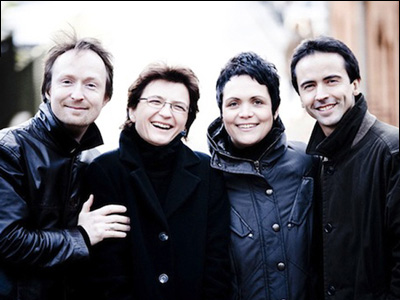By Brian Taylor Goldstein, Esq.
Dear Law and Disorder:
We filed a P-1 petition for an orchestra that is to perform at our venue. The petition was approved and it includes the orchestra’s conductor. However, the conductor just informed us that he does not want to go the consulate and apply for his P-1 visa (he says he just doesn’t have time for such an inconvenience.). Instead, he wants to enter as a visitor on the ESTA/Visa Waiver Program. He claims he did this when the orchestra toured the United States last year, including performing at our venue, and there was no problem, so he wants to do it again. We never realized he performed for us last year as a visitor. Are we in trouble? What if he insists on doing this again this season? What are the risks for us and for him?
Unless this is the conductor of the Hogwarts Symphony Orchestra, he seems to be laboring under the misbelief that he can waive his magic baton and dismiss anything he finds unpleasant, inconvenient, or displeasing. If only that were true.
Your situation presents several problems, the first and most immediate being that, under U.S. Immigration Law (however, inane we may all agree it is), an artist is not allowed to perform in the U.S. while on a visitor visa. Regardless of whether or not tickets are sold and regardless of whether or not the artist is paid in the U.S. or abroad (or even if the artist performs for free), no performance activities are permitted while an artist is in visitor status. Unless an artist has been admitted on an O or P visa, or has been admitted in some other applicable work authorized classification, any performances are illegal.
Technically, as the presenter/venue, you are supposed to verify the work authorization of each artist who performs for you. Had the conductor presented his visa (or lack thereof) to you last season, it would have quickly been discovered that he was not authorized to perform. On the slim chance you were ever audited for immigration compliance, your venue could be found to have violated U.S. Immigration law by facilitating the illegal performance of a non-U.S. artist without proper work authorization. Penalties could range from fines to the greater scrutiny of future visa petitions.
I understand that, in this case, the conductor in question was able to enter the U.S on the ESTA program, perform, and leave without issue. He was lucky….and so were you. While I can see the temptation to try the same deception again, especially for a busy conductor who does not want to make a trip to a U.S. Consulate, such luck cannot continue indefinitely.
While U.S. Consular Officers and U.S. Customs and Border Protection Officers are as vigilant as possible, they cannot catch every violator on every occasion. The situation is much like running a red light, or committing any other criminal or penal violation, without getting caught. The lack of an arrest does not make the crime any less illegal. In this case, however, the penalties for an immigration violation can be more severe than a mere traffic ticket.
For an artist, presenting oneself at the border and asking for admission as a visitor, when the artist, in fact, intends to perform illegally constitutes a fraudulent misrepresentation to a federal law enforcement officer and constitutes a felony. If caught, the artist can be subject to immediate deportation as well as restrictions on future travel, visas, and work authorization. While I am familiar with many Non-U.S. artists who have managed to sneak in and out and perform as visitors on various occasions, I am also familiar with many who have been caught, even after years of being undetected.
In one case in particular, an internationally known artist who had held multiple O-1 visas over the course of his career, found himself with an approved O-1 petition, but unable to find the time to travel to a U.S. Consulate for an interview and to receive a physical O-1 visa. Instead, he entered as a visitor. Much to the dismay of him and his management, he was discovered. Because of his notoriety and international standing, he was not deported. However, because of his attempted fraudulent entry, his visitor privileges were revoked and for the next six years he was required to seek a “waiver of inadmissibility” every time he went to a U.S. Consulate to apply for a visa. Such a waiver adds an extra 2 – 3 weeks of processing time to the issuance of a visa.
I am also familiar with a management company whose future immigration petitions have been consistently flagged for extra review and processing when it was discovered that there were knowingly assisting artists in filing deception P-1 petitions.
As you can see, I would strongly advise the conductor that the immediate temptation of avoiding the time and hassle of a trip to the consulate is outweighed by the potential loss of his ability to travel and work in the U.S. Ultimately, if he decides to continue running the red light on the assumption that he won’t get caught, you and your venue should not be required to go joy riding with him.
_________________________________________________________________
For additional information and resources on this and other legal and business issues for the performing arts, visit ggartslaw.com
legal and business issues for the performing arts, visit ggartslaw.com
To ask your own question, write to lawanddisorder@musicalamerica.org.
All questions on any topic related to legal and business issues will be welcome. However, please post only general questions or hypotheticals. GG Arts Law reserves the right to alter, edit or, amend questions to focus on specific issues or to avoid names, circumstances, or any information that could be used to identify or embarrass a specific individual or organization. All questions will be posted anonymously.
__________________________________________________________________
THE OFFICIAL DISCLAIMER:
THIS IS NOT LEGAL ADVICE!
The purpose of this blog is to provide general advice and guidance, not legal advice. Please consult with an attorney familiar with your specific circumstances, facts, challenges, medications, psychiatric disorders, past-lives, karmic debt, and anything else that may impact your situation before drawing any conclusions, deciding upon a course of action, sending a nasty email, filing a lawsuit, or doing anything rash!



BR Campaign Runs Out of Gas
February 10th, 2014By ANDREW POWELL
Published: February 10, 2014
MUNICH — Creative exhaustion appears to have arrived for a whimsical, multi-year promotional campaign here. Its subject: the Bavarian Radio Symphony Orchestra. Its budget and goals: inscrutable. The thing would never have seen the light of day in the U.S., if only for legal reasons, and its existence is one of several signs of a vain administration within parent entity Bavarian Broadcasting, or Bayerischer Rundfunk, known as BR.
Centered on posters, or Plakate, the distinctive campaign eschews images and color and relies for its life on typography, specifically the manipulation of one clunky serif-and-sans-serif font, used until recently with flair. Typically, names or numbers related to a concert program are toyed with. Riccardo Muti comes to conduct, and so we see a giant MU. At some distance, not where spelling dictates, we land on the TI. Or RAT tops a Ligeti-Schumann-Haydn-Sibelius poster, its TLE completing the conductor’s name lower down. III, heavy like prison bars, blares out for a Bruckner Third Symphony.
The layouts show up on street posters, the Internet, handouts, even on the BRSO’s scholarly and free concert program books. They are the brainchildren of Bureau Mirko Borsche, whose trending design clients include Zeit Magazin, Harper’s Bazaar and the Bavarian State Opera.
But the design firm’s ideas have become less flattering of late. A gas mask promotes Herbert Blomstedt’s all-Brahms program this week (Feb. 13 and 14). In use for months already, the image results from a zoomed-in, weighty letter B, rotated right. The composer’s name forms a facial pout that traces the B’s dimple, with the conductor’s name straight, above the mask’s eyes. No slur is meant, one must assume. Other inverted or morbid layouts, including distorted initials, have dampened the aging campaign’s fun as options for novelty have narrowed.
Is there oversight? Only of the lightest kind, apparently. Beyond the posters, questions lurk about misleading buttons and missing contact information on the BRSO website, extravagant BRSO sales literature, and a peculiar organizational structure.
Orchestra administration is buried deep inside BR, a Munich-based, license-funded broadcaster with a budget above $1 billion and more on its plate than classical music. Just how deep is reflected on BR’s giant website, whose home page offers no direct link to the orchestra. Site visitors must learn that the acclaimed BRSO is part of BR Klassik, and then a link can be found. Once on the orchestra’s home* page, material is clearly presented. But not all of it. A click on “Presse” at the top, for instance, loops you back to BR and no fewer than sixteen press officers, one of whom, Detlef Klusak, has “Musik” after his name. In a brief call last week, however, Klusak confirmed he has nothing to do with the BRSO.
Finding the orchestra’s managers from its home* page is a trip in itself. You first click on “Orchester,” then on “Die komplette Besetzung” (the whole cast) under an illustration showing only musicians. You scroll down to the lower right corner of the next page, click on “Management,” select and copy the name of the person you want — there being no email addresses or phone numbers on the secluded page — and Google him or her!
Nikolaus Pont is in charge. New, with less than a year on the job, he did not initiate the promotional campaign or plan the website, and it isn’t clear yet whether he is more than a caretaker. (Fundraising, to be sure, is not front-and-center for him as it would be for an American counterpart.) Still, he must have reviewed the BRSO’s 2013–14 season brochure.
Or rather book. Weighing in at 1 lb. 6 oz. (more than half a kilogram), its 180 pages lie between thick, gloss-coated card and a cloth, die-embossed orange spine. Inside are concert details and color photographs, including four hopelessly sullen shots of Chefdirigent Mariss Jansons. Freely distributed, the Bureau Mirko Borsche-developed book carries no paid advertising. Broadcast-license-payers can only imagine its cost and the fees earned for design and printing.
An area optimistically labeled “Kommunikation” is headed by Peter Meisel, while another group has its own person under “Marketing.” Meisel works directly with the design firm (a Facebook favorite) but his diverse duties include photography, video liaison and special events. He is, moreover, tasked with keeping the world’s press (including this blog) informed of, and involved in, BRSO activities. A recent round-robin list showed 78 email contacts for the orchestra’s media outreach: 14 within BR, 9 at the Süddeutsche Zeitung (Bavaria’s answer to The New York Times), 16 at other Bavarian media outlets, 16 German outlets, 2 foreign (including Musical America), 6 German freelance music journalists, 2 non-media and 13 private.
Is it time for fresh approaches at the Bavarian Radio Symphony Orchestra? By U.S. standards, certainly, on several fronts, starting with more management accessibility and a promotional campaign that respects visiting artists. As for this week’s concerts, Brahms will pout or smile depending on Blomstedt and the musicians, not on any poster design. The serene and sage maestro, still effective in his eighties, will no doubt laugh his gas mask right off, but of course that would suggest an altered formation for B-L-O-M-S-T-E-D-T.
[*Domain and site changes in April 2015 removed the awkwardness described here.]
Screenshot © Bayerischer Rundfunk
Related posts:
Zimerman Plays Munich
Jansons Extends at BR
Jansons! Petrenko! Gergiev!
BRSO Adopts Speedier Website
Blomstedt Blessings
Tags: Bavarian Radio Symphony Orchestra, Bayerischer Rundfunk, BR Klassik, Brahms, Bureau Mirko Borsche, Commentary, Herbert Blomstedt, Mariss Jansons, München, Munich, Nikolaus Pont, Peter Meisel, Süddeutsche Zeitung, Symphonie-Orchester des Bayerischen Rundfunks
Posted in Munich Times | Comments Closed